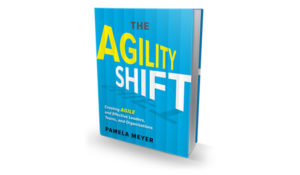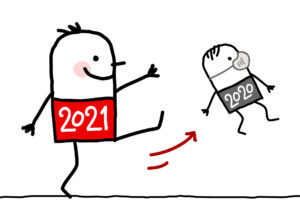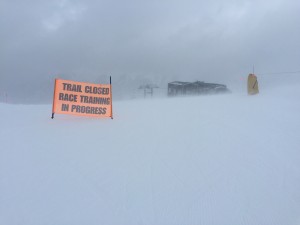
Assess and Adapt Your Outlook to Thrive When Things Don’t Go As Planned
Whether you have been charged with helping your leaders, team or organization become more agile, are in the process of adopting agile methodologies, or simply recognize the need to be more effective in the midst of change, the starting place is the same: developing and reinforcing your agile mindset.
In previous posts and my book, The Agility Shift I have described this mindset as one that relies less on planning and more on preparing. This shift doesn’t mean that we need to throw planning out the window altogether, but that we recognize that in rapidly changing contexts we must approach our work with a readiness to learn and adapt.

For many of us, this represents a significant shift in perspective and mindset. Below are a few characteristics of this shift, along with a new resource for you to assess your current state of mind and begin your own agility shift:
An agile mindset welcomes discoveries.
An agile mindset welcomes new discoveries as an opportunity to improve and refine the work at hand rather than seeing them as a threat to anyone’s original idea, plan, value, identity, status, ego or any other barrier that can get in the way of innovation.
An agile mindset expects iteration.
Of course, iteration is at the heart of each sprint cycle in agile methodologies because developers of new software, products and services know that each iteration is an opportunity to test and learn. You don’t need to implement an agile methodology to understand the value of testing and learning. When you expect to iterate, you can hold your ideas and plans lightly, be open to new information, and fail, learn and innovate faster.
An agile mindset is responsive, not reactive.
You know the difference between being reactive and responsive if you have ever said or done something you later regretted. Reactivity is often guided by a knee-jerk impulse based on fear, defensiveness and the hard-wiring of our reptilian brain. Responsiveness can take place in the same amount of time, but includes a level of self-awareness and awareness of available resources, along with a rapid assessment of the situation and ability to prioritize effective action (or in some cases, inaction).
Most of us can’t honestly claim to have an agile mindset 100% of the time, especially under stress or in the midst of a high stakes challenge or opportunity. The stressed or anxious brain tends to revert to its familiar ways of thinking (at best) or go into full flight, freeze, or flight mode (at worst). Neither mode is particularly effective when innovation is our goal. The good news is that all of us can learn to make an agility shift to an agile mindset, even if it is not our first response.

An Agile Mindset Starts with Awareness.
The first step to making this agility shift is to become more aware of what you are experiencing when things don’t go as planned or when you discover new disruptive information.
The original Agility Shift Inventory (ASI) can help you with this first step: Awareness.
The ASI includes:
- Survey questions designed to inventory your current agile mindset state
- A Generative Conversation and Catalyst Guide with explanations and coaching questions to improve your mindset for effective action.
- A chance to update your answers from the last time you took the inventory (remember, your results are highly contextual, so if your work setting/situation has changed since you last took it, your results will likely change as well).
For those ready to do a deeper dive, we recommend you start by registering for the newly launched Self-Guided Leadership Agility Development Journey, which gives you access to a more dynamic version of the ASI, the Agility Shift Inventory™ for Leaders, as well as a host of additional resources and lessons.
In this high-content, high-engagement program you will grow your leadership agility capability and start the new year with the ability to effectively respond to the unexpected and unplanned and quickly turn challenges into opportunities.
- Learn how to lead with an agile mindset.
- Grow your leadership agility competence, capacity, and confidence at your own pace, on your own time.
- Take the new Agility Shift Inventory™ for Leaders and receive personalized recommendations based on your leadership agility strengths and areas of opportunity.
- Discover new ways to engage and inspire team agility.
By registering you will enjoy a full year of access to your leadership agility development journey with content and resources designed to complement the best practices described in Pamela Meyer’s game-changing book, The Agility Shift.
Of course, if you are not ready for begin focus on your leadership agility just yet, you can still become familiar with the core concepts of agility by taking the original ASI here:






